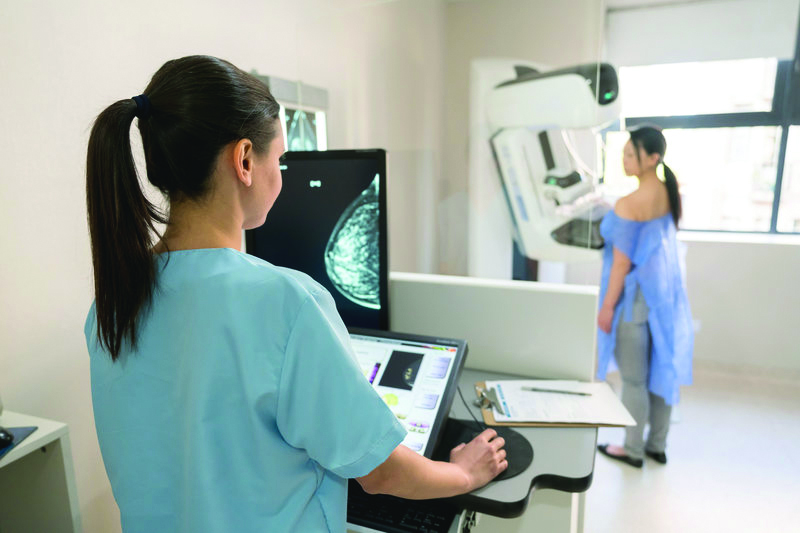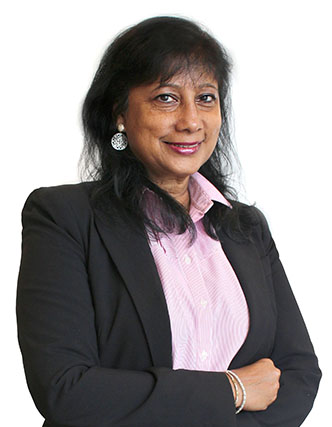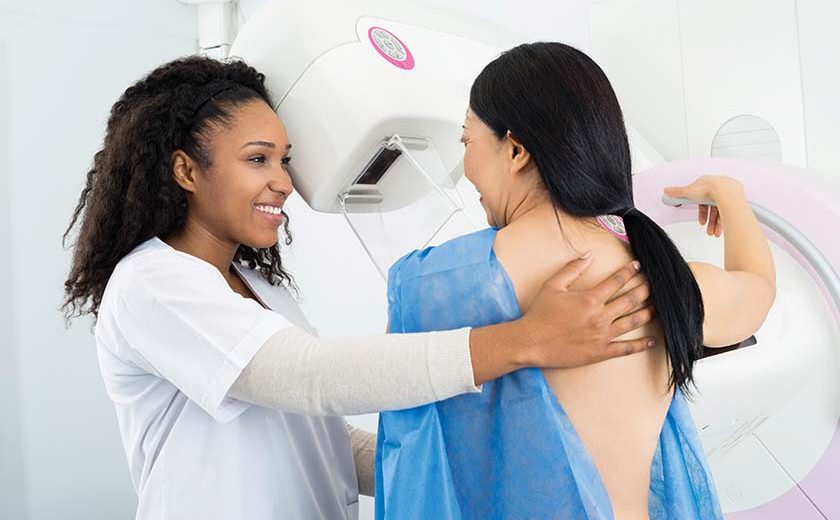Breast cancer is the most common cancer in women worldwide. Early detection has shown to be associated with reduced breast cancer morbidity and mortality.
Mammography is a screening and diagnostic tool designed for early breast cancer detection and is considered the gold standard. Screening mammogram can help to detect breast cancer even before the tumor can be felt in a normal breast exam. Studies have shown annual screening mammography in high risk women beginning at age 40 can lower woman’s risk of dying from breast cancer and saves most lives.
Digital breast tomosynthesis (DBT) is a term that is used for 3D mammography. Breast density is associated with reduced mammographic sensitivity and specificity.3D mammography is found to be superior to conventional 2D mammography for routine breast cancer screening of women with dense breast Studies have shown that 3D has a greater accuracy for earlier and easier breast cancer detection. It can improve breast cancer detection by 27-50% and has a lower recall rate by 17-40% (Wake Radiology- June 8, 2015), thus fewer women need to return for additional imaging which will result in decrease patient anxiety and costs.
On a mammogram, both glandular breast tissue and cancers appear white making it more difficult to identify cancers in dense breasts. Conventional 2D mammograms the breast is compressed, and images are taken in two views and masses may be obscure by overlapping breast tissue. 3D mammogram is a significant breakthrough in radiology and helpful for women with dense breast tissue.
3D mammogram is able to make a better distinction between cancers and overlapping dense glandular breast tissue. In 3D mammography the breast is compressed, and images of the breast are generated by taking multiple views across the breast in an arc. The computer software then compiles the views into a three-dimensional reconstruction of the breast to produce a layered 3D image of the breast tissues. The radiologist is able to view the breast as thin slices, layer by layer and better differentiate a cancer from overlying glandular breast tissue, see the images with greater detail and accurately detect breast tissue abnormalities and breast cancers earlier. 3D mammography is said to decrease the chances of a “false positive diagnosis and increases the cancer detection rate. Women with dense breast are likely to benefit the most.

Research has shown that a 3D mammogram is up to 40 percent more sensitive than 2D mammogram. In conjunction to this, according to the Journal of the American Medical Association(Effectiveness of digital breast tomosynthesis compared with digital mammography outcomes, 2016),a large, multisite retrospective US study and in 3 prospective European trials., demonstrated a 16% recall reduction and a 41% increase in invasive cancer detection with DBT screening compared with screening with Digital Mammogram alone.
The main concern for most public when they undergo certain medical imaging is the radiation dose exposure. Mammogram uses low radiation doses to get high quality images. A mSv is a measure of radiation dose. A standard mammogram with 2 views of each breast is about 0.4 millisieverts. Radiation dose from 3D mammogram can range from the same to slightly higher. The amount of radiation dose is slightly higher if a 3D mammogram is done in combination with a 2D mammogram, but the dose is still lower than FDA’s safety limit. If a synthesized 2D view can be created from the 3D data, then the radiation dose of the 3D mammogram is essentially the same as a conventional 2D mammogram. Many studies have shown that there is no significant difference when a synthesized 2D mammogram is used to find cancers.
Breast tomosynthesis is not yet available in all the imaging facilities. If you’re going to a new facility for your 3D mammogram, bring along any prior mammograms or ultrasound images and reports for comparison. Breast tomosynthesis is performed on an outpatient basis. Avoid using deodorants, antiperspirants, powders, lotions, creams, or perfumes on your breasts or under your arms. Metallic particles in powders and deodorants can interfere with the imaging. Wear a two-piece outfit on that day. You will be given a gown and asked to remove any necklaces, jewelry and clothing from the waist up. Inform your doctor about any breast symptoms, prior surgeries, whether you have a family or personal history of breast cancer, and if there’s a possibility you are pregnant.
During this exam, a qualified radiology technologist will position your breast on a special platform on the mammography unit. Your breast will be gradually compressed with a compression paddle. Breast compression is necessary in order to even out the breast thickness spread out overlying breast tissue and minimize blurring so that small abnormalities are less likely to be hidden. Some women with sensitive breasts may experience discomfort. However, note that compression gives better quality images even in breast tomosynthesis examination.
During the breast tomosynthesis examination, the x-ray tube moves from one side of your breast to the other in an arc, capturing multiple images from different angles along the way while your breast remains compressed .Patients are recommended to hold their breath for few seconds to reduce movement blurring. The mammogram machine will move above you from one side to another and capture the images. The process is repeated to capture the image of the breast from the other position. Three-dimensional image sets and synthesize standard two-dimensional images can also be obtained. The images which are generated by the computer are analyzed by a radiologist the whole process takes approximately 30 to 40mins. After the examination is complete, you can be asked to wait until the radiologist determines that all the necessary images have been obtained. The radiologist interprets the images and sends the report to your primary care or referring physician, who will than discuss the results with you.
A breast tomosynthesis should be valuable in both screening mammography and diagnostic mammography .The 3D imaging capability allows more accurate evaluation of breast lesions and enables better differentiation between cancers and overlapping glandular breast tissue .The expected result with this technology is an overall lower recall rate, higher cancer detection rates , a decline in interval cancers, higher positive predictive value for a biopsy recommendation, fewer biopsies and improved radiologist confidence . Females who are at risk or show symptoms to have breast cancer should consider doing a 3D mammogram, even though the process takes more time, but it has higher accuracy and precision compared to a standard mammogram. Furthermore, those who are 40 years of age and above in the high-risk group are recommended to get a yearly screening mammogram as early detection is associated with reduced breast cancer morbidity and mortality.
 Article by:
Article by:
Dr. Vijayalakshmi A/P S. Krishnapillai
Radiologist,
Gleneagles Hospital Kuala Lumpur (GKL)


